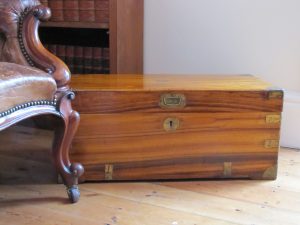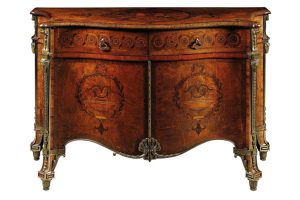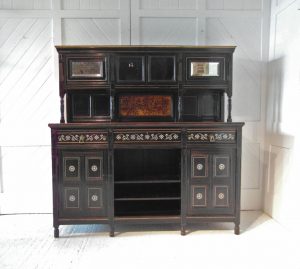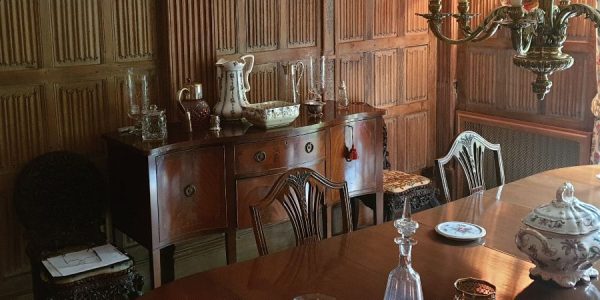Our furniture valuations indicate renewed interest
Clients often anticipate that our furniture valuations will be low, reflecting the much-publicised decline in this sector of the antique market. Culvertons in-house expert sees things in a different light: Jonathan urges solicitors, executors and members of the public not to dismiss anything as being out of favour. The market is not as buoyant as it was in the 1980s when demand for antique furniture was at its peak, however, recent valuations are testament to the fact that many pieces are once again in vogue, and highly sought after.
If you would like us to appraise or value furniture on your behalf, or just need a second opinion before you sell, you are welcome to seek some help and advice via our contact page.
Jonathan is one of a group of dealers, interior designers and collectors still keen to promote the merits of quality period furniture.
Jonathan, our furniture valuer, says –

“The new millennium brought with it a desire to shake up tried and tested formats. This led to a marked absence of traditional antique furniture from interior trade publications, and their observant subscribers from dealers’ showrooms as they looked elsewhere for inspiration. This has thankfully come to an end and we are now seeing select pieces used to great effect within contemporary and period interiors. This was somewhat inevitable. Where else could you source, for such a small outlay a combination of irreplaceable materials, superb craftsmanship and exquisite design to create a piece with a visual and historic appeal? This welcome change in attitude, and the marketing opportunities that the internet provides, have also re-energised the trade.”
There are always exceptions to the rule, but the following is a very basic and brief outline, in descending value, of how our specialist sees the current market in antique furniture –
1. The Grand Masters of Eighteenth-Century Design
Thomas Chippendale is without doubt England’s finest cabinet maker. Together with the furniture designer Thomas Sheraton and the cabinet maker George Hepplewhite, he has become a household name. Their designs and creations are synonymous with Late 18th Century fashionable interiors, however, their legacy was secured by their aptitude for self-promotion. They each had exquisitely illustrated directories of designs published which helped established their names in 18th Century Europe and continue to help us when investigating claims of attribution.
Discovering a piece of furniture of the correct age that closely resembles a design from the master’s directories would be a major event during one of our valuations. However, a similarity would unfortunately not be enough to make a claim of authenticity – a firm attribution by a leading expert would also be needed. This would only be given if an indisputable provenance confirming the past ownership from its manufacture to the present day could be provided. If it can be authenticated, the value of a piece of furniture by one of the masters, or attributed to their workshops, can exceed all others.

Generations of cabinet makers have satisfied a steady demand for pieces that echo the masters’ original designs. However, due to their current fall from widespread decorative favour, many of these beautifully made pieces of furniture now struggle to achieve a valuation that reflects their obvious qualities.
2. The finest 18th & Early 19th Century furniture – values remain high
Robert Adam, John Cobb, Lawrence Fell, William France, Robert, and Richard Gillow, William Ince, James Lawson, John Linnell, John Mayhew, Samuel Norman, Paul Saunders, George Seddon and not forgetting Thomas Hope and George Smith, whose designs epitomized the Regency period, were once revered throughout the trade and by the collecting public. Their cabinet-making epitomised quality, exemplary design, and the very best materials. The younger generation’s broadening taste has now diminished the renown of these once celebrated craftsmen. However, examples with a firm attribution, condition and crossover appeal (the ability of furniture to enhance contemporary as well as period settings) will still rank higher within our valuations than their more fashionable counterparts.
3. Gothic Revival, Aesthetic & Arts & Crafts movements – the simplicity of design

The artistic movements of the 19th and Early 20th Centuries were driven by phenomenal creative talents: William Burgess; Christopher Dresser; Edward William Godwin; Charles Rennie Mackintosh; Peter Waals; and Ernest Gimson; amongst others. They changed perceptions, enriched interiors and influenced future designers for generations to come. Their designs were inspired by our medieval past, Japanese & Asian art, industry and emerging European artistic movements. Examples of furniture from this period that can be attributed to one of the leading makers are rare and can generate high values when they appear on the open market. The most appealing pieces are often, and unsurprisingly, the more modest and unassuming examples, which complement today’s interiors. Again provenance or a firm attribution is still required if your example is to surpass similar items manufactured by the masters’ numerous followers.
Furniture in the style of these celebrated designers survives in fairly large numbers. They are popular and commercial, especially if their creators showed restraint in their execution, staying true to the founder’s original inspiration. However, furniture from this period of artistic design that shows a mixture of influences will often struggle to reach significant levels of valuation.
4. English oak & country furniture – rarity, originality and its surface is key

Vast quantities of early English oak furniture survive to this day, a testament to the durability and strength of our nation’s most beloved tree. Numerous timbers such as yew, elm, ash and sycamore were also used to construct and decorate our vernacular heritage.
The value of all antique country furniture will increase if a high degree of originality and lustrous patina is retained. However, some forms of finer, less utilitarian, early English furniture such as glass cabinets and credence tables are incredibly scarce and can fetch very high sums when they appear on the open market. They were constructed mainly for the interiors of the wealthy minority who could afford to put aesthetics ahead of practicality. However, as construction lightened and more decorative, less durable timbers were used, the vulnerability to damage and decay increased. Taking this into consideration, and the alterations, adaptions, embellishments and neglectful later generations, it’s not surprising there are only a few original; highly-prized examples still in existence.
5. Decorative furniture – valuations are often based on overall appeal rather than originality
Recent demand for decorative furniture from dealers, interior decorators, and the buying public has given rise to a flourishing trade in innovative refinishing and embellishment. Furniture that has commercial potential but may have been altered, adapted or excessively restored is often a prime candidate for a decorative makeover. High values can still be achieved for painted, stained, bleached, or even sand-blasted furniture, as long as the finished article has visual appeal and complements today’s interiors.
Does your furniture have the ‘D’ Factor?
When considering whether your piece falls within this lucrative area of the market, take a step back and check to see if it has any of the following attributes –
Functionality – With ever-increasing demands on living space, period furniture that complements contemporary interiors and can be used on a daily basis is in high demand.

Dimensions – Traditionally a young dealer quickly learned the phrase ‘small is beautiful (if he or she wanted to stay in business and put food on the table). Nowadays size is irrelevant as long as the piece leaves a positive first impression and is functional. Often it is over-sized decorative pieces that rank highly within current furniture valuations.
Condition – As long as there is commercial potential, complete originality is not vital in this sector of the trade; visual appeal and functionality are more important. Any later embellishments or repairs are often now seen as part of the piece’s history to be enjoyed. Later decorative finishes can also cover a multitude of imperfections.
Patina and colour – Decorative furniture that retains an original surface, attractive patina and colour will figure highly within our valuations’ although not to the same extent as within other sectors of the market.
Age – The age of a piece of furniture, when weighing up its decorative qualities, has little bearing on its value. This is unsurprising when, within this sector of the trade, the fact that a piece is antique is often considered secondary to its aesthetic appeal.
6. Beauty is said to fade with age – but the same cannot be said of antique furniture

Currently, in this selective market, there are countless examples of fine English furniture that deserve far higher valuations than we can award. This is because, as prices rise ever higher for what is deemed fashionable, the opposite is true for much of what was once, until fairly recently, highly prized and priced. During the 1960s / ’70s the market witnessed a similar seesaw effect. However, this ‘best and the rest’ mentality has created a wonderful opportunity, as ‘the rest’ has become more affordable. A small financial investment could not only provide you with a beautiful piece of furniture to enhance your living space but, over time, it is also likely to increase in value.
In recent years, due to ever-increasing running costs and changes in decorative tastes, the number of general antique furniture dealers, especially those with retail premises, has noticeably decreased. However, the remaining dealers are often well worth a visit: their love of their trade, experience and understanding of current trends is typically reflected in their well-chosen stock. Good dealers also enjoy sharing their knowledge in person, a bonus for visitors to the high street.
Find out more about the furniture valuation services we offer
If you wish to arrange a quotation, have a question about our services, need some help and advice or would like to send us an image please visit our contact page.
Do we provide our services in your area?
Culvertons undertake furniture valuations throughout central & southern England principally in Surrey, Kent, Sussex and Hampshire, including London.

